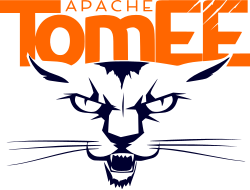| Apache TomEE | |
|---|---|
 | |
| Developer | Apache Software Foundation |
| Initial release | April 27, 2012 |
| Stable release | |
| Preview release | |
| Repository | TomEE Repository |
| Written in | Java |
| Operating system | Cross-platform (JVM) |
| Type | Application server |
| License | Apache-2.0 |
| Website | http://tomee.apache.org |
Apache TomEE (pronounced "Tommy") is the Enterprise Edition of Apache Tomcat (Tomcat + Java/Jakarta EE = TomEE) that combines several Java enterprise projects including Apache OpenEJB, Apache OpenWebBeans, Apache OpenJPA, Apache MyFaces and others. [3] In October 2011, the project obtained certification by Oracle Corporation as a compatible implementation of the Java EE 6 Web Profile. [4] [5]
